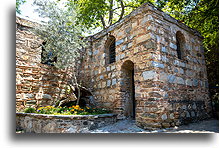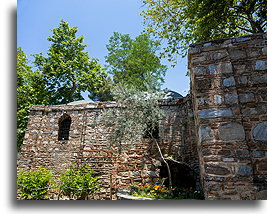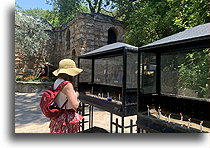Roman Catholics consider it as the last place on earth where the Virgin Mary, mother of Jesus, lived. This location near Ephesus, was discovered in the 19th century based on the descriptions from the revelations of a German nun who had never visited the place. Some historical and Scripture facts confirm this because this was the place where St. John lived and died. Based on St. John in his Gospel, Jesus entrusted him with the protection of his Mother from the Cross. Later, St. John moved to the Roman province of Asia (today's Turkey), so it is assumed that the Virgin Mary traveled with him. However, the Scriptures, and not even St. John, ever mention the life of Mary in Ephesus or her death, and her Assumption. The House of the Virgin Mary in Turkey is in contradiction with the Tomb of Mary in Jerusalem, considered by the Eastern Church to be the place of burial and Assumption of Mary.



When visiting this place, we can encounter not only Christians, but also Muslims, mainly women. This should come as no surprise, since the Quran mentions Mary seventy times, more than the New Testament. The virgin birth of Jesus is extremely important in Islam as one of the most important miracles of God. In the Quran, Mary is the only woman clearly identified by name and described as the greatest of all women. That is why Muslim women look upon her as an example for themselves when visiting this shrine.




